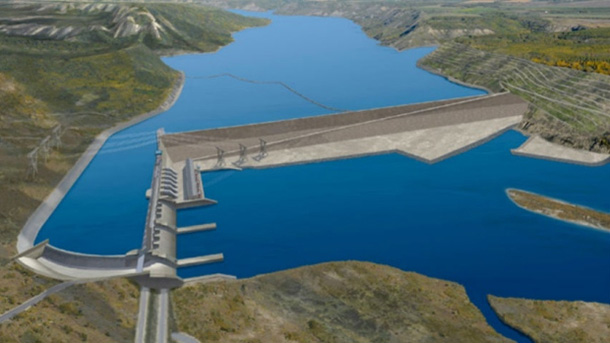Halting work on the Site C dam could save British Columbians up to $2 billion, according to a report from UBC’s Program on Water Governance.
The report says the government should stop Site C construction and send the project to the BC Utilities Commission for review.
“Our analysis indicates that cancelling the Site C project as of June 30 would save between $500 million and $1.65 billion, depending on future conditions,” the report concludes. Suspending the project, allowing for future completion, would save $850 million to $2 billion.
“Both cancelling and suspending are preferable to continuing with the Site C project,” the report found.
The researchers found BC Hydro’s forecast of future electricity demand may have been “strategically optimistic.”
“The decision to build Site C was based on a strikingly high load forecast made by BC Hydro in 2012, which was (a) notably higher than similar estimates made before or since... and (b) largely excluded the potential for energy conservation,” the researchers found.
“BC Hydro’s current forecasts are much lower, and indicate that Site C will produce surplus electricity that will have to be sold at a loss for many years after commissioning,” the report says.
The current demand forecast is 5,000 to 6,000 gigawatt hours lower than the numbers used to justify Site C, said Rick Hendricks, an energy consultant who was one of the researchers. The dam is expected to produce 5,100 gigawatt hours.
“So basically, Site C disappeared from the load forecast, the size of Site C just disappeared,” said Hendricks. “It’s a pattern that doesn't appear on any other load forecasts, except for just before Site C was reviewed the first time.”
BC Hydro’s load forecast dropped from over 70,000 gigawatt hours in 2012 to less than 64,000 in the most recent forecast. Similarly, the load forecast also spiked in 1981, just before Site C was reviewed the first time by the BC Utilities Commission.
“There may be reasons for that. We’re not suggesting there’s anything untoward, but it’s something BC Hydro should have an opportunity to explain in a public forum,” Hendricks said.
The researchers found that based on BC Hydro’s current demand forecast the Crown corporation will lose $950 million to $2 billion as it’s forced to sell unneeded power at a loss on the export market.
Last July, BC Hydro submitted a Revenue Requirements Application to the BCUC that included new load forecasts and a history of old load forecasts that had never been released to the public. Hendriks worked with UBC professor Karen Bakker and energy consultant Philip Raphals to dig through the data.
“A whole string of new information came out that we didn't have before,” Hendricks said. “BC Hydro’s views had changed on a few things since before Site C was approved. So that changed how we evaluated the project. For example, they acknowledged that the cost of wind energy had declined by 20 per cent, which was something they didn't want to acknowledge in the prior review.”
The situation has changed so dramatically that the work should be halted until a full review is done, the report concludes.
The BC Liberals have consistently refused to send Site C to the BCUC, and have extolled the dam as a good investment for B.C.
NDP leader John Horgan has said he would send Site C for review by the utilities commission.
Green leader Andrew Weaver, who was at Campbell’s announcement of the dam in 2010 and said it qualified as green energy, now opposes the dam. ![]()
Read more: BC Election 2017, BC Politics, Environment

















Tyee Commenting Guidelines
Comments that violate guidelines risk being deleted, and violations may result in a temporary or permanent user ban. Maintain the spirit of good conversation to stay in the discussion.
*Please note The Tyee is not a forum for spreading misinformation about COVID-19, denying its existence or minimizing its risk to public health.
Do:
Do not: